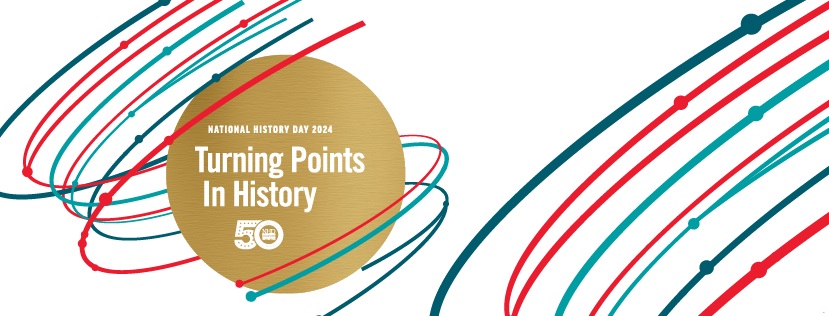Your Bibliography
The two accepted styles for citations and bibliographies in NHD projects are:
- Kate L. Turabian, A Manual for Writers of Term Papers, Theses, and Dissertations
- MLA Handbook for Writers of Research Papers
Students may choose either of these style guides, but must remain consistent with a specific edition of that style guide. While the NHD Rule Book indicates the 5th edition of the MLA guide (edited by Joseph Gibaldi), students may use the 5th, 6th or 7th edition, as long as they remain consistent to that edition's guidelines throughout their project's content and bibliography.
Changes in MLA's 7th edition
Some of the changes in the 2009 7th edition of the MLA handbook are quite different from previous editions. A few examples of these changes include:
- URLs are no longer required for citations of web sources.
- For each citation, it is required to indicate what type of source it is by placing the medium of publication at the end of the citation; "Print," "Web," "Film," "Personal Interview," etc.
This website highlights the main points of the new MLA 7th edition.
Documenting Sources
History research is like having a conversation with other thinkers who are also asking some of the same questions you are. At National History Day we want to see where you got your information, the sources you used, and the basis for your own original ideas.
Acknowledging sources in history research is done through the practice of citation. Citations can take the form of attributions (or giving credit) in the text of a paper, footnotes at the bottom of the page, or endnotes.
When do you need a citation?
You need a citation for:
- Direct quotations
- Opinions, judgments or insights of others that you summarize or paraphrase
- Information not widely known
- Information that is open to dispute or not commonly accepted
- Tables, charts, graphs or statistics taken from another source
You don't need a citation for:
- Your own ideas, observations and conclusions
- Common knowledge, like facts readily available in many reference works
- Familiar quotations, like "Early to bed and early to rise make a man healthy, wealthy and wise," can be attributed to Benjamin Franklin without indicating source
What should the citation look like?
Different fields have different styles of footnotes. For National History Day, we use the MLA style, named for a professional academic society, the Modern Language Association.
MLA Style
In the MLA style, sources are indicated in parentheses within the text and linked to a bibliography at the end of the paper. You indicate your reference by writing out the author and page number, like this:
By the 1790s, African American families began to cluster in two areas of the city of Philadelphia (Nash 164).
If you are citing more than one work by the same author, then indicate which one by including a few key words from the title, like this:
By the 1790s, African American families began to cluster in two areas of the city of Philadelphia (Nash, Forging Freedom 164).
Finally, if you are including the author and title in your actual sentence, then just indicate the page number:
According to historian Gary Nash in his work Forging Freedom, African American families began to cluster in two areas of the city of Philadelphia in the 1790s (164).
Where should the citation go?
Place a citation as close to the quoted or paraphrased material as possible without disrupting the sentence. When material from one source and the same page numbers is used throughout a paragraph, use one citation at the end of the paragraph rather than a citation at the end of each sentence.
Parenthetical citations usually appear after the final quotation mark and before the period. An exception occurs, however, in quotes of four or more lines since these quotes are presented as block quotes: that is, they are indented and use no quotation marks. In such cases, the parenthetical citation goes at the end of the block quote after the period.
How do I format my Bibliography?
Each of the citations in your text are then linked to a bibliography at the end of the paper. In MLA style, a bibliographic entry has three parts: the author's name, the title, and the publisher information. Like this:
Nash, Gary. Forging Freedom: The Formation of Philadelphia's Black Community, 1720–1840. Cambridge: Harvard University Press, 1988.
Entries vary by kind of source. Here are some of the kinds of sources and how they are cited:
Book by Multiple Authors/Editors
- Trotter Jr, Joe William. and Eric Ledell Smith, eds. African Americans in Pennsylvania: Shifting Historical Perspectives. University Park, PA: Penn State University Press, 1997.
Article or Essay in a Collection or Anthology
- Sumler-Lewis, Janice. "The Forten-Purvis Women of Philadelphia and the American Antislavery Crusade." In African Americans in Pennsylvania: Shifting Historical Perspectives. Ed. Joe William Trotter Jr. and Eric Ledell Smith. University Park, PA: Penn State University Press, 1997. 166-176.
Journal Article:
- Alnutt, Brian E. " 'The Negro Excursions': Recreational Outings Among Philadelphia African Americans, 1876-1926." The Pennsylvania Magazine of History and Biography 129 (January 2005): 73-104.
Interview:
- Fogarty, N. Personal interview. 2 July 2003.
Unpublished Manuscript Source, like a letter:
- Sarah Wister to Jeannie Field, 1 October 1863, Wister Family Papers, Historical Society of Pennsylvania.



